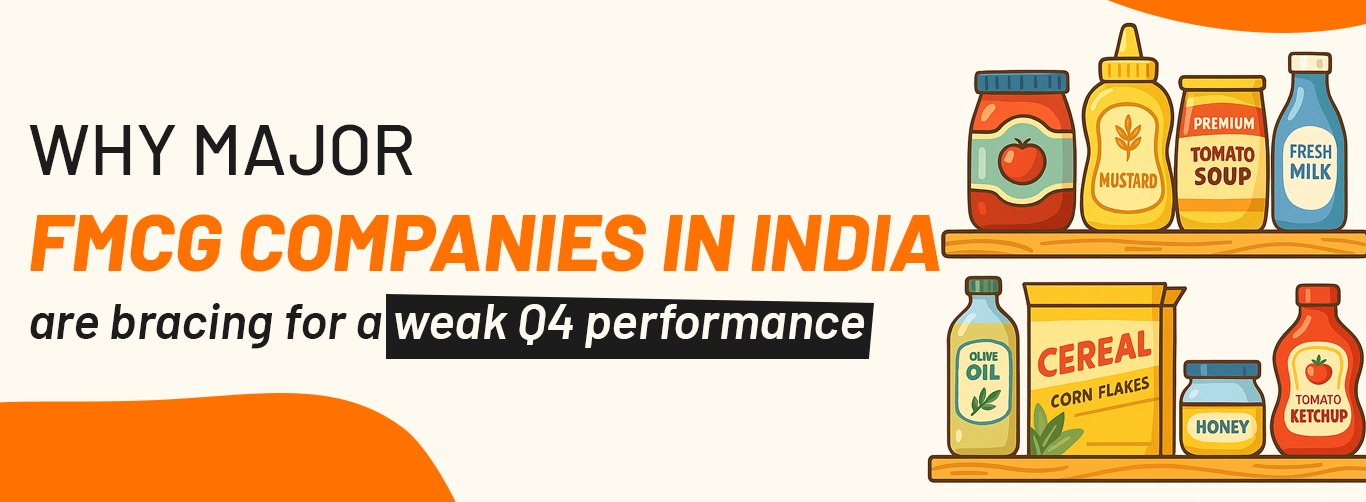The March quarter of FY25 is likely to be a subdued one for India’s fast-moving consumer goods (FMCG) sector. Despite some outliers showing relative resilience, overall sector performance is expected to remain underwhelming, shaped by sluggish demand, inflationary pressure, and weak volume growth.
From muted urban sentiment to rising input costs, several headwinds are weighing on earnings potential, prompting investors and analysts to brace for a weak quarter. Here’s a breakdown of the key factors influencing this outlook.
1. Divergent Revenue Trends Across Players
Pre-earnings updates indicate a mixed performance across the sector. While some firms are expected to report double-digit revenue growth driven by stable segment performance and pricing tweaks, others have flagged only mid-single-digit growth due to muted demand trends and seasonal factors.
Revenue expectations vary significantly, with some firms projecting flattish consolidated performance, and others hinting at high-single-digit topline growth. Volume growth, however, is generally subdued, pointing to a fragile demand environment.
2. Demand Recovery Remains Elusive
Consumer demand, particularly in urban markets, continues to be under pressure. Factors such as low wage growth and persistent inflation have kept discretionary spending in check. Analysts note that overall demand levels in Q4 are largely in line with Q3, with no meaningful acceleration.
In rural areas, some improvement has been observed, aided by price rollbacks in staples and expanded distribution. Yet, the recovery appears fragile and largely driven by a low base effect. For the sector, a sustained and broad-based rural revival remains critical, given that rural India contributes over a third of total FMCG sales.
3. Margin Pressures Intensify
Profitability is expected to face headwinds in Q4. A reversal in commodity trends has led to input cost inflation, with key raw materials like crude oil, palm oil, coffee, and sugar witnessing sharp price hikes. This comes after a period of cost softness in previous quarters, when companies had cut prices and ramped up advertising.
As a result, gross margins are expected to contract or remain under pressure, especially for firms grappling with operating deleverage. Higher advertising and promotional spends to defend market share further constrain operating margins.
In some cases, shipping delays and rising freight costs—linked to global disruptions such as the Red Sea crisis—may also have a marginal impact on profitability.
4. Volume Growth Still Subdued
Volume trends continue to show weakness across major product categories. In several cases, volumes are expected to be flat or only marginally higher compared to the previous quarter, indicating that the sector’s recovery has yet to gather steam.
Even where modest revenue growth is expected, much of it is driven by minor price increases rather than an expansion in actual sales volumes. Certain categories such as tea, soaps, and household care remain under pressure, partly due to past pricing actions and changes in product pack sizes.
5. Cautious Optimism for the Road Ahead
While Q4 is expected to mark another muted performance, some analysts believe it could also represent the bottoming out of volume growth. A better rabi harvest, stable monsoon forecasts, and easing inflation could lay the groundwork for a gradual recovery in consumption during FY26.
However, any meaningful improvement is expected to be slow and staggered. Until demand picks up and companies regain pricing power, topline and margin expansion are likely to remain constrained.
The broader FMCG index has significantly underperformed the benchmark index over the past six months, reflecting investor wariness. For sentiment to shift, companies will need to show signs of demand resilience and better margin management in the upcoming quarters.
Conclusion
India’s FMCG sector is in a period of transition. The March quarter may not bring cheer, but it could offer vital signals about the pace and shape of recovery in FY26. Until then, a cautious approach from both investors and companies appears to be the prudent path forward.
Disclaimer: This article is for informational purposes only and should not be considered as investment advice.

Leave a Reply